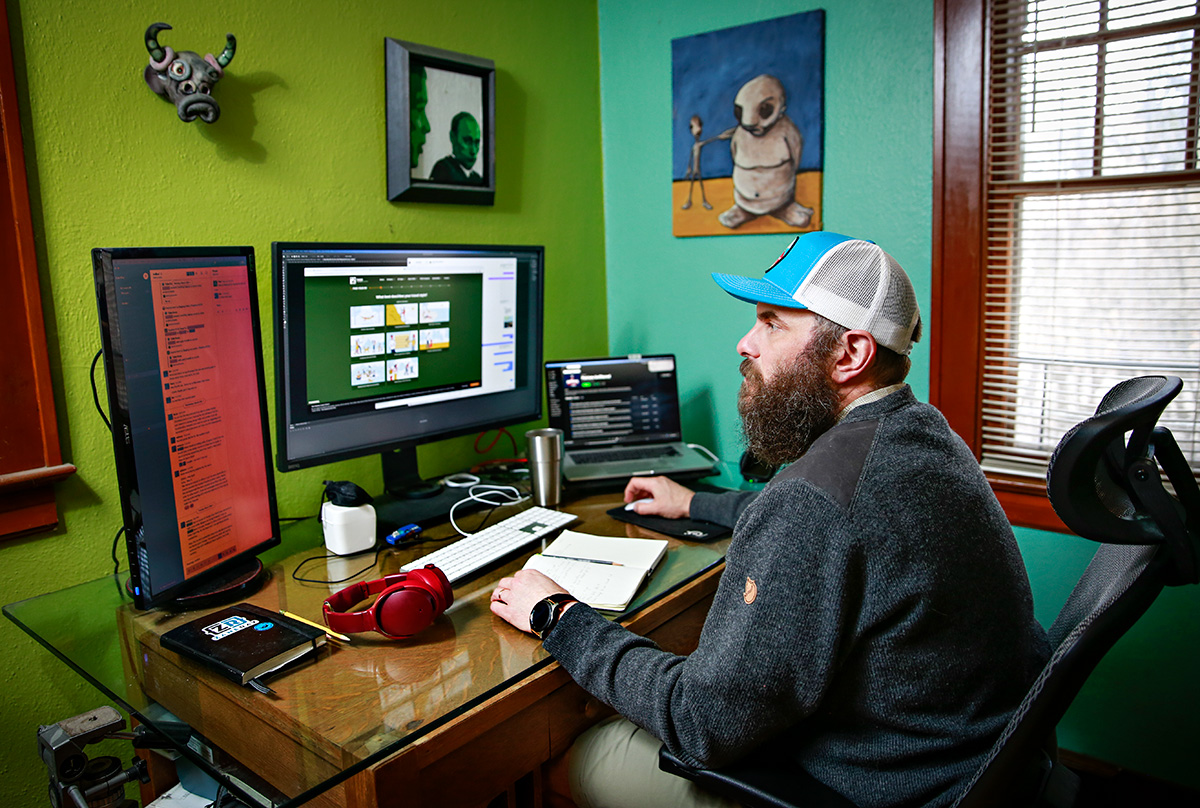The Future of the Home Office
Remote work was already trending before the pandemic, but the era of social distancing has accelerated the process, with employers reporting increased productivity, easier recruitment and a better work-life balance
By Maggie Dresser
Last spring when the COVID-19 pandemic shut down the country, Neuro-ID’s CEO Jack Alton closed the office doors of the software company in Whitefish and sent his employees home to work remotely until further notice.
Alton gave his workers a budget to improve their home offices for things like computer monitors and new phones as they transitioned much of their work lives to Zoom calls and Slack.
A year later, as Montana’s economy is almost completely reopened and many employees have trickled back into their offices over the past several months, more than half of Alton’s employees are still working from home by choice.
“What we found in a high tech organization is most software developers and engineers really prefer the remote environment,” Alton said. “It’s quiet, they don’t have to commute back and forth to work … We’ve seen productivity increase.”
Alton’s employees can choose to work from home or head into the office, and that will probably not change as the pandemic winds down. The flexibility allows for more productive work hours while giving workers personal time during the workday, creating a more desirable work-life balance.
Barbara Wagner, the chief economist for the Montana Department of Labor and Industry (DLI), has heard similar stories from business owners and agrees that remote work is increasing productivity. In addition to the home office environment, she says many employers have saved a lot of time by replacing in-person meetings with Zoom meetings.
“If you send workers to travel for perhaps an hour-long meeting, now they’ll have that meeting remotely and not spend five hours driving to get there,” Wagner said. “I think there’s a lot of impacts helping in the long-term, and online meetings are becoming more socially acceptable.”
Christina Henderson, the executive director at Montana High Tech Business Alliance, says employers are also recruiting more qualified workers from other states for upper-level, specialized jobs that have been historically difficult to fill.
In the past few months, Alton has recruited workers from major metropolitan areas like San Francisco, Washington D.C. and Boston, and Neuro-ID has grown since the pandemic began.
“We’ve picked up tremendous talent,” Alton said. “They eventually may want to move to Montana, but they don’t have to.”
Anecdotally, Wagner has heard of many remote workers moving to Montana and bringing their jobs with them, but she says at this point there’s not enough data to confirm the trend.
According to a DLI report published in December 2020, 36% of Montana’s workforce has a job that can be done remotely, while 30% of the workforce worked remotely during the peak months of April and May 2020.
Nationwide, roughly 40% of the workforce shifted to remote work. Wagner attributes Montana’s lower percentage to its rural landscape, easing the ability to social distance compared to more urban areas.
But Montana’s economy also relies heavily on tourism and the service industry, which cannot be done remotely.
Of Montana’s total employment, 64% of the workforce is not able to telework and 76% of unemployment claimants were in occupations that were unable to work remotely, according to the DLI report. Of all claimants in 2020, food prep and serving-related occupations had the highest percentage with 16.1%, while healthcare support had the lowest with 3.4%.
Wagner says the impact of job losses in the tourism and service sectors correlates with those unemployment numbers.
“I think we can see that impact,” Wagner said. “The number of people on unemployment reflects that issue, and the industries with job losses are also the industries where most unemployed people are.”
But in the technology sector, Wagner says Montana has efficiently transitioned to remote work, which will benefit Montana’s economy in the long run.
Henderson, of Montana High Tech Business Alliance, says remote work was already trending, but the pandemic has accelerated the process.
“I think some of the trends that we saw are beneficial to growth,” Henderson said.
“I think that this actually presents a lot of great opportunities for the state of Montana,” Wagner added. “A lot of businesses have reported to us that they see increased productivity, we see people from out of state moving to Montana because of our great living standards and outdoor access … There certainly are some growing pains with home prices that we need to work through. I think remote work will continue to be beneficial.”